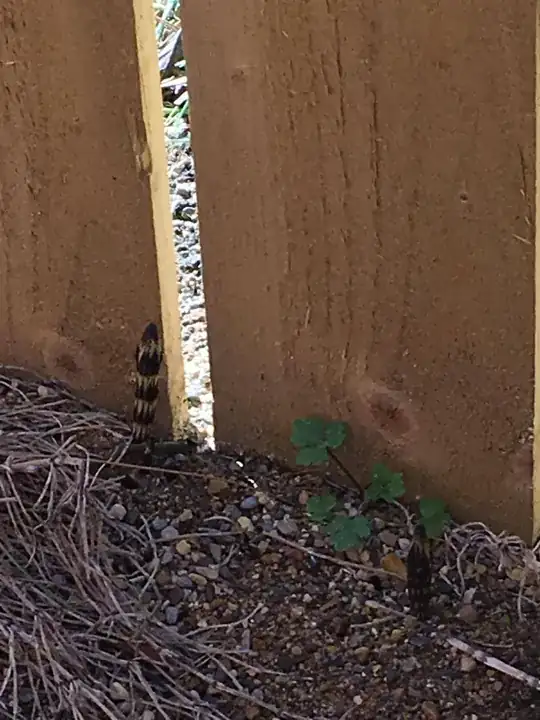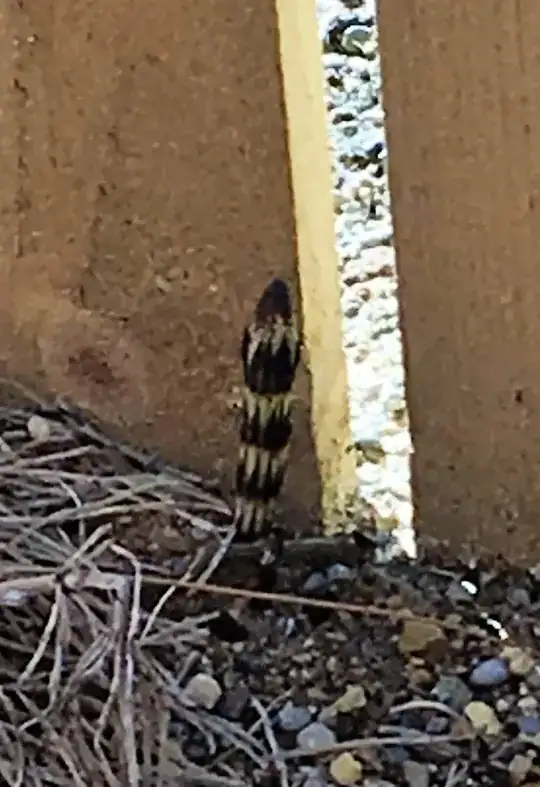As you can see, next to the fence at the bottom there is some sort of black and yellow plant with a corn-like looking texture. I can't find anything that says what it is. May it also be noted I live in the U.K. Does anyone know what it is or at least if it's a plant or flower?
-
can you add a pic that is closer in. its difficult to see. – JonathanC Mar 25 '17 at 12:30
-
Hi Stamp! I cropped your photo to try to make it easier to see. It's blurry up-close, though, so if it's doing more harm than good, feel free to delete it, or let me know and I'll do it. Welcome to the site! – Sue Saddest Farewell TGO GL Mar 25 '17 at 19:15
-
Plant or flower? Flowers are reproductive structures found on plants. Some are pretty, some are not. Some are obvious, some are not. – George of all trades Mar 25 '17 at 21:14
3 Answers
Well, at this stage, it looks like one of the Orobanche, or broomrape family (image of a more advanced one here http://www.markgtelfer.co.uk/beetles/salisbury-plain-again-broomrape-toadflax-and-ground-huggers/) the trouble is, its only March and these usually don't appear that early. A clearer photo might help, or take one as it advances so that it becomes more obvious as it develops. Orobanche generally a rare - they're parasitic plants, and grow very much in association with a host plant's roots, and the host varies depending on the variety of Orobanche; it may even be growing in association with a plant next door.
The other possibility is one of the Equisetum varieties, common name Horsetail, which I very much hope it isn't. One shoot is a bit unusual though, they usually start popping up over a broader area. Seeing what it looks like in a week or so would be very useful.
UPDATE
Following your comment that there are more shoots of this appearing, then it likely is Equisetum, probably Equisetum hyemale http://www.tastygardener.com/horsetail/. It usually retains stems above ground which may remain evergreen - it may be that someone's dug it out last year and these are new shoots for this year, but its proximity to the fence might suggest it's coming through from next door if you haven't noticed it before.
It is available for sale - people usually grow it in a pond or at pond margins, but it does need controlling to restrict its spread, because its pretty invasive. The extent to which it's spread will reveal itself over the next few weeks. It much prefers damp or wet soil conditions, so if your soil dries out pretty well in summer, particularly if you're in East Anglia, Essex or the South East, that will hopefully help control its spread
- 131,823
- 3
- 72
- 162
-
There does appear to be darker ones around the area I counted 10 all together (edit also if you look more towards the right on the first picture near the green plant thing there is a small black one) – Stamp Mar 25 '17 at 19:15
-
Equisetum then - you can actually buy Equisetum hyemale, which I suspect this one probably is. Often grown in ponds or at pond margins...I'd better update my answer. – Bamboo Mar 25 '17 at 22:54
-
To me, it doesn't seem Equisetum hyemale: the "tail" is too much large, the scales too large: no green space between nodes. Additionally "hyemale" means winter, so it should be already well developed. For me it E. arvense or E. sylvaticum. – Giacomo Catenazzi Mar 27 '17 at 07:22
-
Time will tell; its not immediately obvious to me which variety it is at this stage of growth, so you may be right, I just mentioned hyemale because it's the most common, deliberately planted variety here. – Bamboo Mar 27 '17 at 10:48
I think it is an Equisetum. And I'm not pessimistic as Bamboo. It could grow as single shot (or few shots), especially on first years. It is also edible. The only equisetum on my garden didn't last a mow of lawn.
EDIT:
I would remove it, but we are curious about what species it is. So in few months, could you check if you see larger plants near your home (e.g. other ivy or Galium for yellow Orobanche; or damp soil for Equisetum)
- 14,039
- 3
- 19
- 44
-
-
I think gliphosate will not work. Equisetum is a genre unrelated to all conifers and all flowering plants, so it is also one of the harder vegetable to exterminate with chemicals (which are designed for flowering plants or mosses). – Giacomo Catenazzi Mar 27 '17 at 07:19
Looks like some species of Equisetum, most probably E. telmateia (the Great Horsetail) which is becoming more common in the UK. Futher details and images available on http://www.brc.ac.uk/plantatlas/plant/equisetum-telmateia. Equisetum are not flowering plants instead they are Pteridophytes - a group of vascular plants which also includes ferns. Like ferns they produce spores for reproduction and not seeds.
Orobanche are more delicate plants, quite rare in the UK and would tend to be found in close proximity to their hosts (they are parasitic). Equisetum are common and often problematic weeds, although I do have a soft spot for them - I like their prehistoric look. They will spread without control (root barriers are a must if growing ornamentally).
- 2,235
- 7
- 27
-
E. telmateia has many more scars, To me it doesn't seems like E. telmateia. On the other hand other Equisetum are usually not so wide, and usually they are much more green. – Giacomo Catenazzi Mar 27 '17 at 08:17

